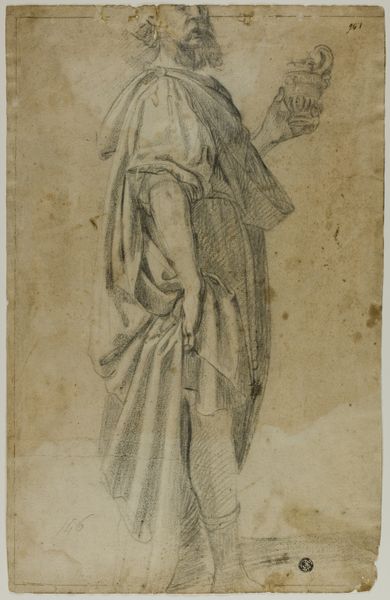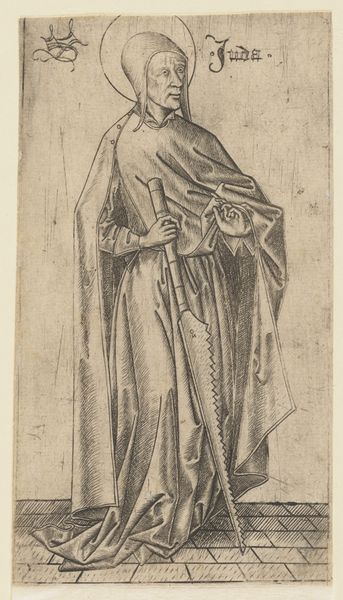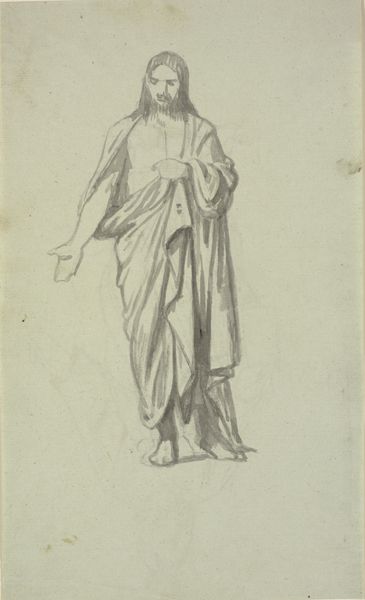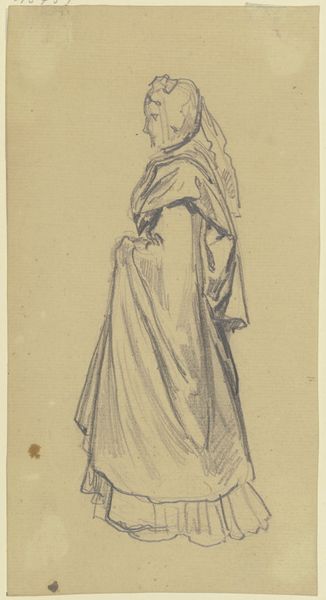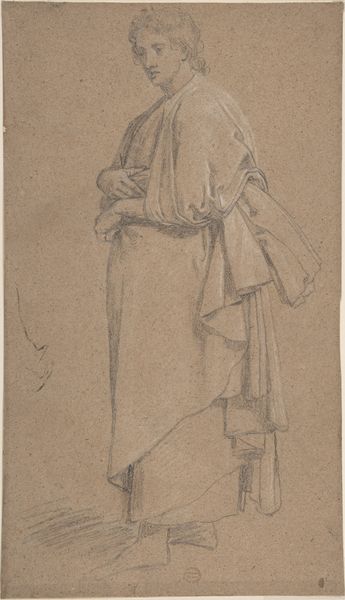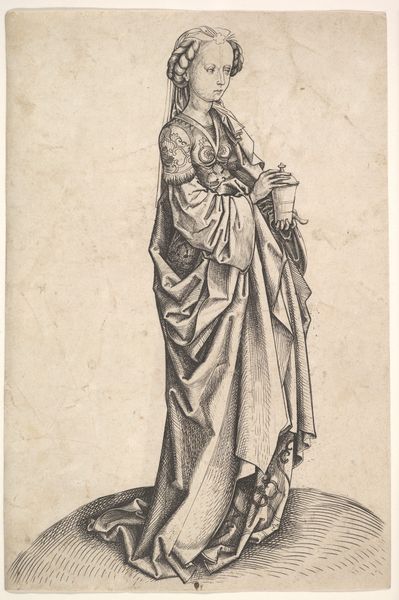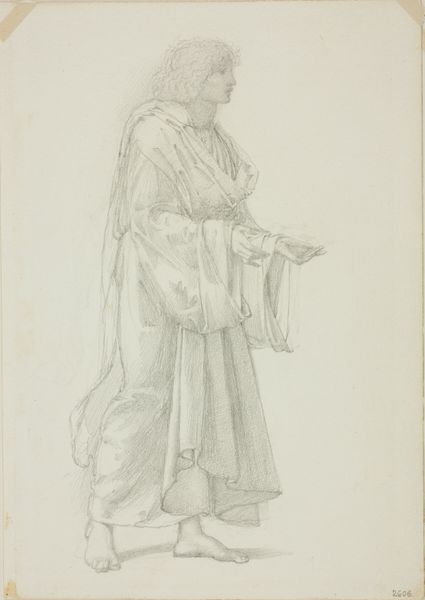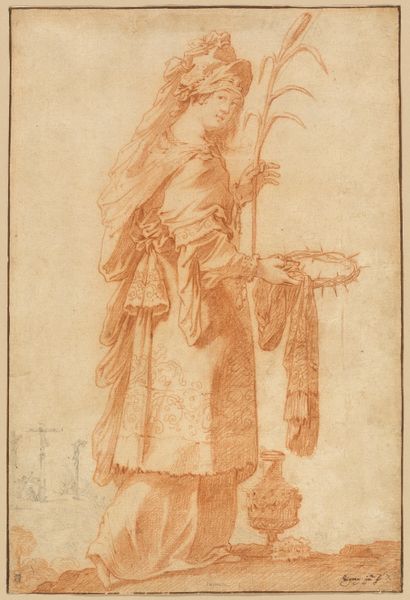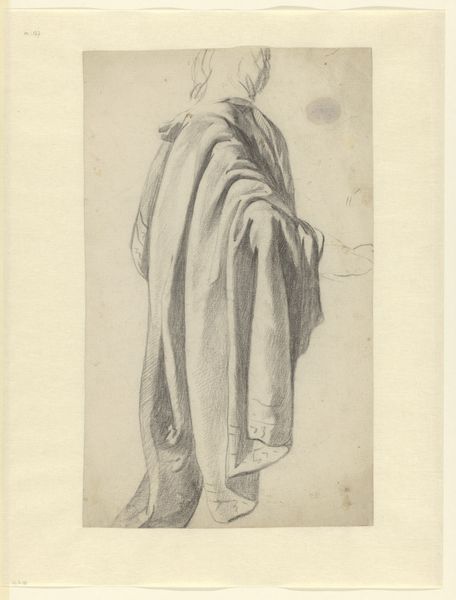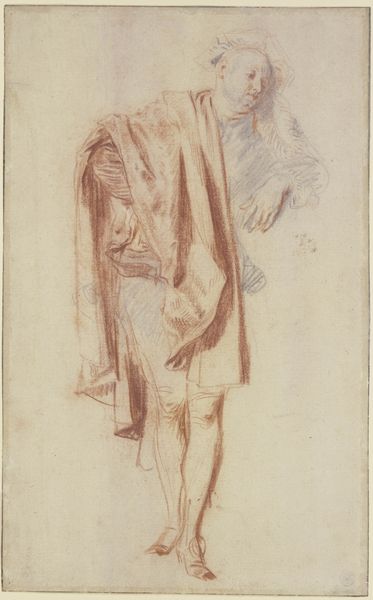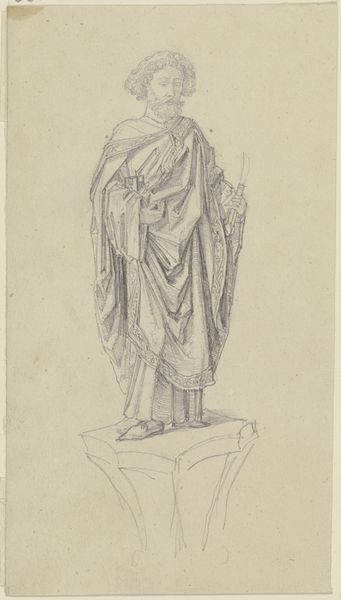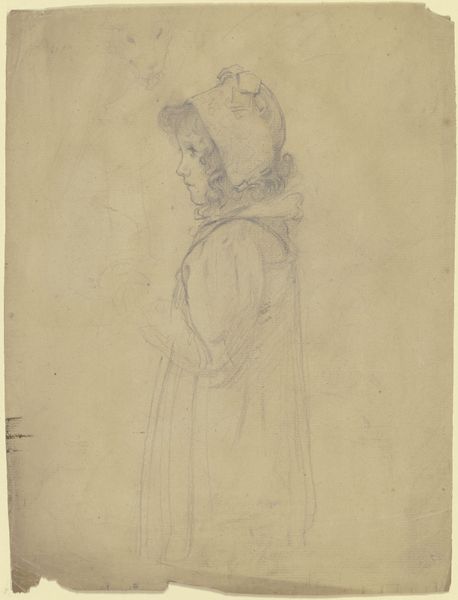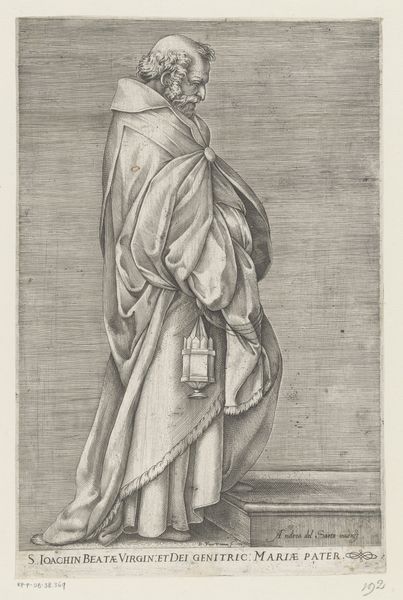
drawing, paper, pencil
#
portrait
#
drawing
#
figuration
#
paper
#
romanticism
#
pencil
#
academic-art
Copyright: Public Domain
Editor: This is a pencil drawing on paper called "Painter Cortes" by Johann Heinrich Hasselhorst, currently at the Städel Museum. The figure has a really melancholic feel to it, like they’re weighed down by something. What do you see in this piece? Curator: It's fascinating to consider the socio-political context in which Hasselhorst was working. Romanticism was a movement deeply intertwined with the rise of nationalism and individual expression. The somewhat dejected posture you observe speaks to the artist’s own internal struggles or perhaps a commentary on the artist’s place within a rapidly changing society, don't you think? Editor: That makes sense. The way the clothing drapes almost overwhelms the figure adds to that feeling. Curator: Exactly. Consider the use of drapery, and think about the symbolic weight it carries. Is it a symbol of status, or is it perhaps indicative of confinement? And let's think about the title, "Painter Cortes." The act of portraiture itself involves issues of power, representation, and the gaze. How might we interpret this “Painter Cortes” in relation to the male gaze? Editor: That's interesting; I hadn’t thought of it that way. So you're saying that even in a seemingly simple drawing, we can unpack complex issues about the artist's identity and position within society? Curator: Precisely. It's about interrogating the historical and social framework within which this piece exists, to create dialogue. Editor: Wow, I will definitely think more about context from now on. Curator: Yes! The best art encourages questioning and a re-evaluation of how we engage with history and identity.
Comments
No comments
Be the first to comment and join the conversation on the ultimate creative platform.

